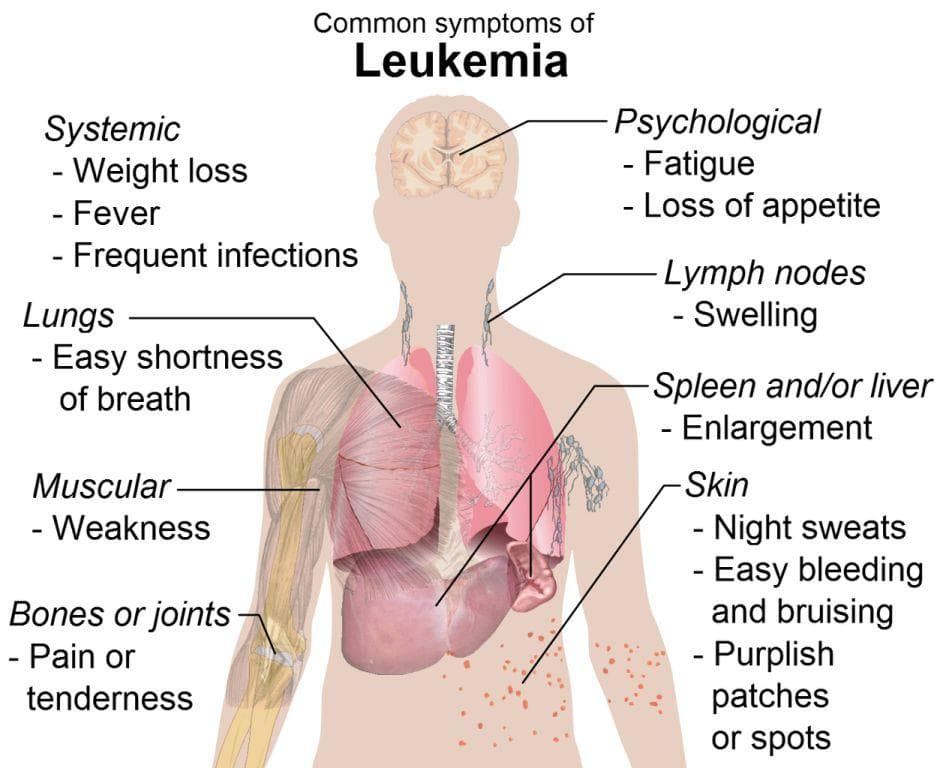Comprehensive Guide to Leukemia: Symptoms, Causes, and Advanced Treatments
Leukemia is a complex blood cancer affecting various blood cell types and progression speeds. This comprehensive guide explores its symptoms, causes, diagnosis, and cutting-edge treatments like chemotherapy, targeted therapy, and stem cell transplants. Understand how early detection and personalized care can improve outcomes and quality of life for leukemia patients. Advances in research are paving the way for more effective and less invasive therapies, offering hope to those affected by this challenging disease. Stay informed about the latest in leukemia management for better prognosis.

Comprehensive Guide to Leukemia: Symptoms, Causes, and Advanced Treatments
Leukemia is a complex and potentially life-threatening type of cancer that primarily affects the blood and bone marrow—the soft, spongy tissue inside bones where blood cells are produced. This disease occurs when the body's normal blood cell development is disrupted, leading to the uncontrolled proliferation of abnormal white blood cells. These abnormal cells, often immature and dysfunctional, crowd out healthy blood cells, thereby impairing the immune system and leading to a variety of health complications. Understanding the intricacies of leukemia, including its symptoms, causes, diagnosis, and treatment options, is crucial for early detection and effective management.
This disease is not a singular condition but a group of related cancers, each with unique characteristics and treatment approaches. Key distinctions are made based on the speed of progression—classified as either acute or chronic—and the specific type of blood cell affected, such as lymphocytes or myeloid cells. Due to its diverse nature, leukemia requires a comprehensive understanding to assist patients, caregivers, and medical professionals in making informed decisions.
Leukemia manifests in several primary forms, each with its own typical demographic and clinical features:
Acute Lymphocytic Leukemia (ALL): Predominantly diagnosed in children, though it can also affect adults. It progresses rapidly, necessitating immediate treatment.
Acute Myelogenous Leukemia (AML): More common in adults, particularly in those over 60, and characterized by rapid development that demands prompt intervention.
Chronic Lymphocytic Leukemia (CLL): Usually develops slowly and may be asymptomatic for years. It is more common in older adults and often discovered incidentally during routine blood tests.
Chronic Myelogenous Leukemia (CML): Has a prolonged initial phase where symptoms may be subtle, but it can progress to a more aggressive form.
Other Variants: These include hairy cell leukemia, myelodysplastic syndromes, and other myeloproliferative disorders, each with distinct features and treatment protocols.
Causes and Risk Factors: The exact causes of leukemia remain elusive; however, research has identified certain environmental and genetic factors that may increase susceptibility. Exposure to specific chemicals like benzene, prolonged radiation exposure, and previous chemotherapeutic treatments are known to elevate risk. Genetics also play a significant role, with family history being a potential risk factor. Additionally, certain inherited disorders and immune system deficiencies may predispose individuals to leukemia.
Recognizing Symptoms: The symptoms of leukemia are often non-specific and can mimic other illnesses, making early diagnosis challenging. Typical signs include persistent fatigue and weakness, unexplained fever, chills, and night sweats, which result from the immune system's response. Bone pain and tenderness may occur due to marrow expansion, especially in children. Swollen lymph nodes, abdominal discomfort from an enlarged spleen or liver, easy bruising, bleeding tendencies, frequent infections, and unintended weight loss are common indicators. In some cases, patients may experience anemia, leading to pallor and shortness of breath.
How Is Leukemia Diagnosed? Accurate diagnosis involves a combination of clinical examinations and laboratory tests. Blood tests such as complete blood count (CBC) often reveal abnormal levels of white blood cells, anemia, or thrombocytopenia. Imaging tests may be used to assess enlarged organs like the spleen or liver. Confirmatory diagnosis typically requires a bone marrow biopsy, where a sample of marrow tissue is examined microscopically for leukemic cells. Additional molecular and genetic testing help determine the specific subtype of leukemia, guiding personalized treatment plans.
Modern Treatment Modalities: Advances in medical research have revolutionized leukemia treatment, leading to improved survival rates and quality of life. Immediate and appropriate therapy is essential, often involving a combination of approaches tailored to the individual patient's condition and disease subtype.
Chemotherapy: The cornerstone of leukemia treatment, involving powerful drugs administered orally or intravenously. These drugs target rapidly dividing cells, effectively reducing leukemic burden.
Targeted Therapy: These innovative drugs specifically attack genetic mutations or abnormal proteins expressed by leukemic cells. Examples include tyrosine kinase inhibitors used in CML.
Radiation Therapy: Employed selectively to destroy cancer cells, especially in cases where leukemia affects the central nervous system or causes localized symptoms.
Immunotherapy: Enhances the body's immune defenses to recognize and destroy leukemic cells. This includes monoclonal antibodies and CAR T-cell therapies that have shown promising results.
Stem Cell Transplantation: Also known as bone marrow transplant, this procedure replaces diseased marrow with healthy stem cells from a compatible donor. It is often considered in cases resistant to conventional therapy or high-risk leukemias.
Leukemia remains a formidable health challenge, but ongoing research and advances in targeted treatments continue to improve outcomes for patients worldwide. Early detection through routine screening and awareness of symptoms can significantly impact prognosis. Support systems, including family and healthcare teams, play a crucial role in managing the emotional and physical aspects of the disease. With continued progress in medicine, the hope for effective cures and longer remission periods is brighter than ever.





